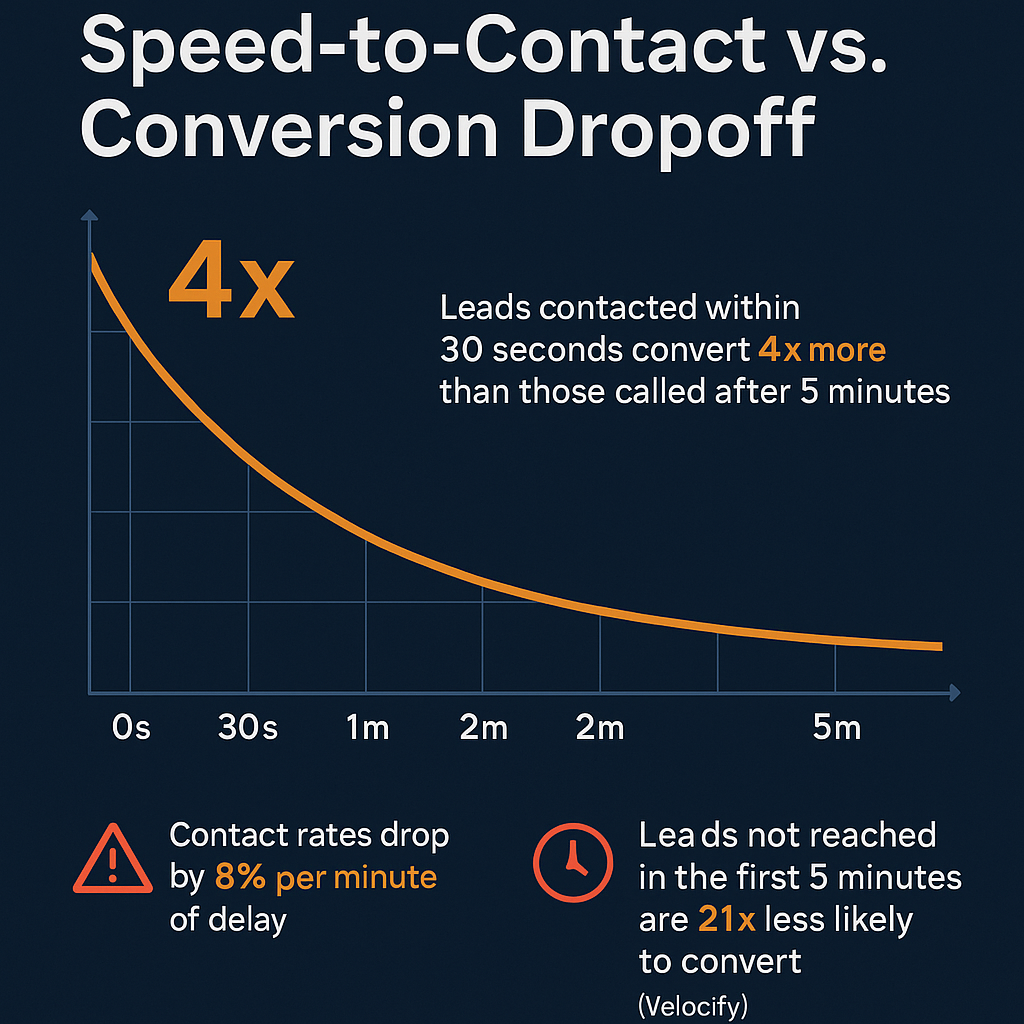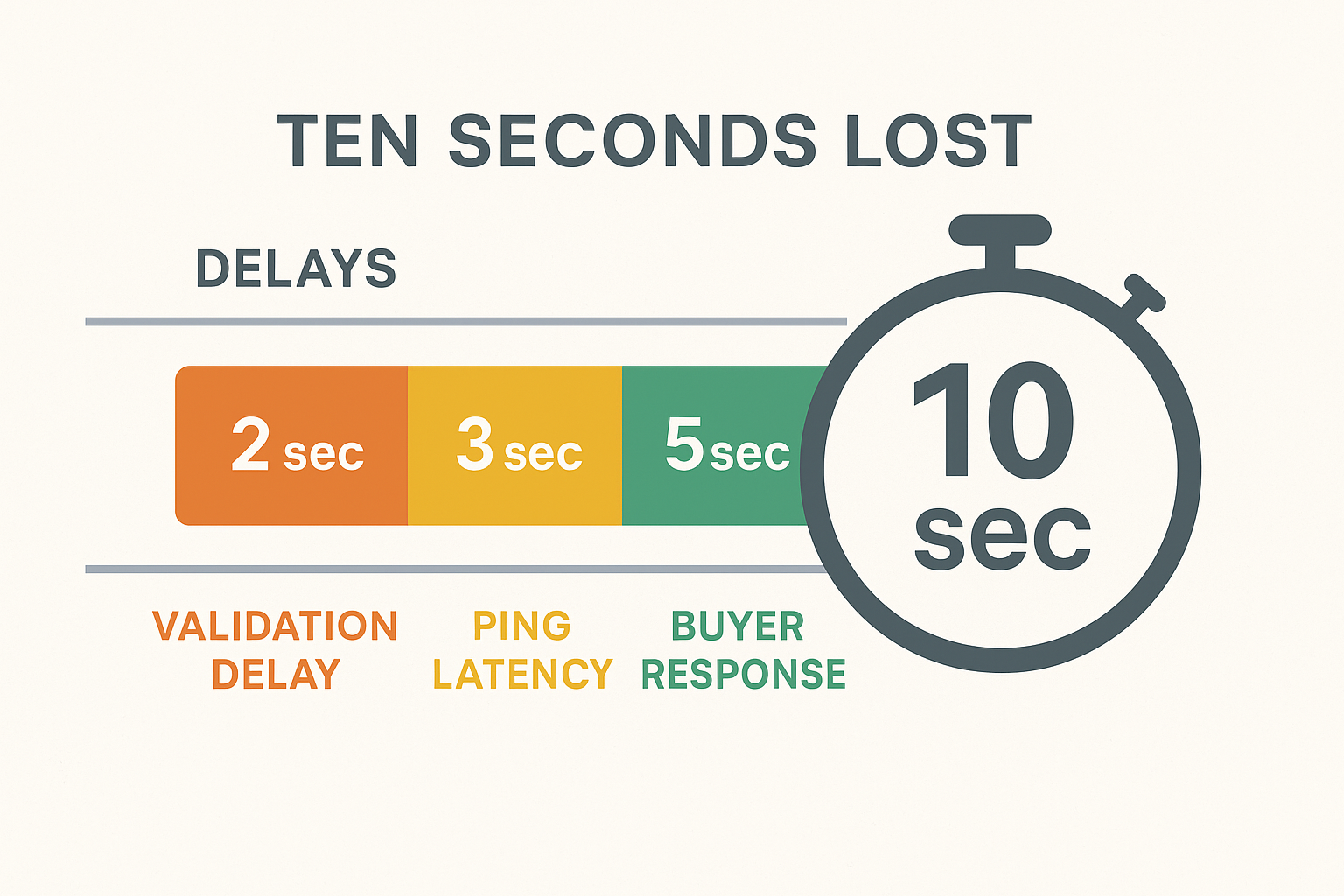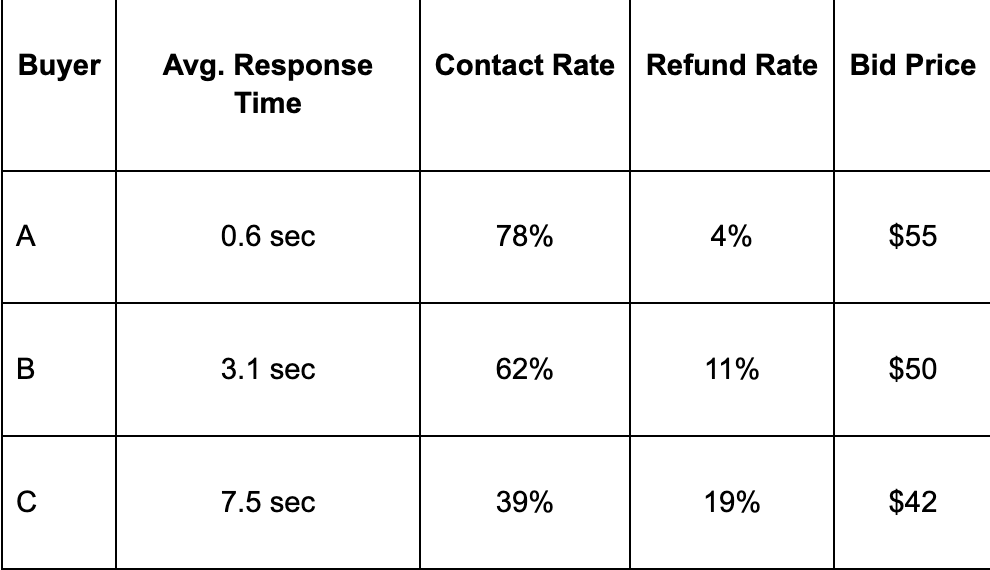In ping post lead distribution, here's the deal: getting a lead to the right buyer fast boosts its worth.
Wait even a minute to get back to someone, and their interest goes down. Call them after five minutes? They're probably talking to someone else already - or just ignoring you.
So, while things like who to send it to and price matters, speed is key.
1. Why Fast Leads Are Important
Folks who send in leads are looking for something right now. That interest fades fast. Here’s the scoop:
- Contact leads super-fast (in 30 seconds) and you get 4x more conversions than waiting five minutes.
- Each minute you wait, contact rates drop 8%.
- If you don't get to leads in five minutes, they're way less (21x!) to turn into customers. (Velocify says so!)
With ping post, where things happen in milliseconds, your setup needs to be quick - or you lose cash.

2. What Makes Lead Flow Slow?
Stuff that slows things down:
- Buyers taking too long to respond (using old filters, slow systems).
- Old routing systems that send leads in batches, not one by one.
- Just sending leads without a ping auction.
- Taking too long to check the lead (cleaning, scoring it after you get it).
These delays add up. Two seconds to check the lead + three seconds for pinging + five seconds for the buyer to answer = ten seconds gone. That could be the difference between getting a customer and missing out.

3. Ping Post vs. Flat Post: Fast Wins
With flat post, the lead goes straight to one buyer. If they're slow, the lead just sits there.
With ping post, many buyers see the lead and bid on it. The best bid (based on price and speed) wins, and that buyer gets the lead right away.
This way, you can send leads based on:
- Who's online and wants leads now.
- Who usually gets back quickest.
- Who turns leads into customers quickest (based on time, location, etc.).
Your system figures out who's the fastest at getting customers, not just who pays the most.
4. Fast = Good Buyer
Check out how fast response relates to buyer value:

Buyer A might not pay the most at first, but if they're fast, they become more valuable. If your system likes fast results, you send more leads to Buyer A—and everyone makes more money.
5. Speed Helps a Lot
Getting to buyers super-fast does more than just get you customers:
- Higher contact rates = less needing to resend leads
- Fewer refunds = happier buyers
- Fast sales = quick to see how well things are going
- Buyers get back fast = you make more money.
Basically, every second saved helps you big time.
6. How to Be Fast
If your current system is slow, fix these things:
✅ Check things Right Away:
Check leads (against do-not-call lists, email, IP, phone type, etc.) when someone fills out the form, not later.
✅ Score Right Now:
Score those leads before you send them to buyers.
✅ Ping Super-Fast:
Pings should get to buyers and back in under 500ms (half a second).
✅ Send Based on Who Answers Fast:
Look at past buyer response times to send to not just the highest bidders, but the fastest responders.
✅ Fast Buyer Systems:
If a buyer's system is slow, slow down or stop sending them leads.
7. Real Example
A client of Standard Information in a Medicare thingy cut their contact time from 90 seconds to under 30 by switching to ping post.
What happened?
- Conversion rates got 2.1x better
- Refunds dropped 40%
- Buyers were way happier - saying leads were fresher
That's what fast routing and fast answers can do.
8. Make Buyers Want to Be Fast
Speed's not just about tech. It's about how people act.
Smart lead sellers now reward fast buyers by:
- Giving them extra credit for fast answers.
- Giving them better access (sending them leads first if they answer in under a second).
- Sending traffic based on how fast they get back to people.
You make a thing where buyers want to be fast—which is better for everyone.
9. What Great Systems Do
Here's what good lead distribution should look like:
- Ping time: Less than half a second
- Pick a buyer: Less than a tenth of a second
- Send to buyer: Less than a second
- Lead-to-call time: Less than half a minute
- Contact in 5 mins: Over 75%
- Better from tiers: 15–40%
- Refund difference (fast vs. slow): 2x–4x
If you're not hitting these? You're losing money.
10. Bottom Line: Be Fast
The lead sellers who win in 2025 won't just get leads—they'll make systems that get the most value from each lead.
That means:
- Sending to buyers who answer fast
- Not using slow followers
- Making things speedy
- Checking and using speed numbers
Ping post can help - but only if your setup can move fast.
Because in lead gen, the money goes to whoever closes fastest, not just bids higher.
FAQs
Q1: Why is speed so crucial in lead distribution?
Speed makes a lead worth more. Contacting one fast, you get way better conversion than waiting. Fast routing makes sure buyers reach people when they are most interested—making more sales and fewer refunds.
Q2: What makes lead delivery slow?
Slow buyer systems, delayed checks, old routing, and long ping times. Every extra second lost drops contacts and sales.
Q3: How is ping post faster than flat post?
Ping post shows leads to buyers at the same time, picking the fastest and best. That cuts wait times and gets you more money per lead.
Q4: How does Standard Information go fast?
Standard Information is made for speed. It checks and scores leads right away, pings buyers in under half a second, and sends to the fastest buyer.